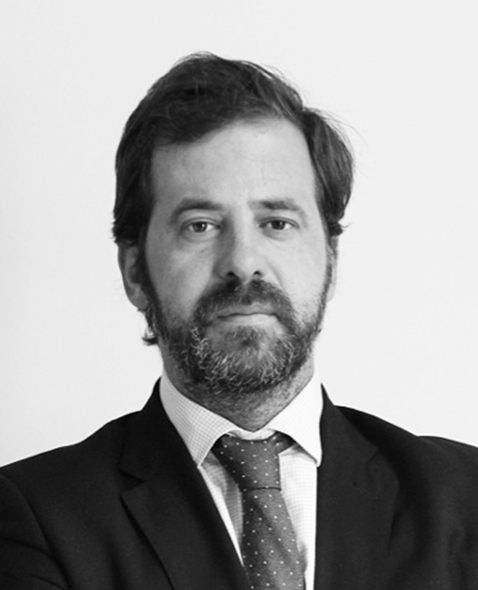Carlos Rus Palacios, general secretary of the Alliance of Spanish Private Healthcare (ASPE), the association of private hospitals and private health centers in Spain, delivers his message on the importance of the private sector within Spain’s healthcare system and the shift in mindset that must be realized by health stakeholders in order to embrace the collaboration between the two sides.
Can you begin with a vision on the importance of the public healthcare system in a Spanish context?
The Spanish health system is based on the principle of universality. In fact, one of the most important recent changes has been to restore the right to health care to all residents in Spain. In principle, this universality would eliminate the need for a private health system. However, private healthcare exists, serves more than 12 million people and represents more than 30 percent of healthcare activity in Spain.
A particularity of the Spanish system is that it has 17 different regulatory segments. Each autonomous community has its own health system, under the general coverage of the national Ministry of Health. For example, each community determines for itself the vaccination schedule, the freedom of doctors to work in public and private health, the level of health expenditure, etc. On average, 35 percent of the budgets of the autonomous communities are allocated to health.
From ASPE, we define our health system, which is one of the most recognized worldwide, as a whole of which public health and private health are part. It is essential that both work as well as possible since both parts are necessary for the proper functioning of the system and to offer patients the best possible assistance.
Currently, the private health system is fundamental in Spain. Private health patients can be divided into three types: those who pay for services consumed, holders of health insurance (about 10 million people) and state officials, judges and military who are governed by the “mutualism” administrative”. The mutualists can choose if they want to go to private or public health and, for decades, approximately 85 percent choose private healthcare (about 2 million people).
In addition, as we have said, private healthcare performs more than 30 percent of health activity, so if it did not exist, public health would face a significant increase in the consumption of resources, both economic and of other types, that would make very difficult to sustain the system as we know it.
What motivates patients to pay additional costs and participate in the private health system when the public coverage is so strong?
Some of the issues most valued by the patients of the private health service are the ability to choose the health centre and the doctor, the agility in the care and the good quality of the Services (technological endowment and facilities, patient care …). On the other hand, it influences that in Spain, health policies are quite affordable.
What have been the most impactful changes you have witnessed in the health system of Spain?
One of the principal changes we have seen has been the reduction of time patients are spending in the hospital and, consequently, the reduction in the number of hospital beds. Innovations in technology and developments in noninvasive surgery have shortened the time of patient recovery substantially. The more time the patient spends at home, out of the hospital, the better. There is a better ability to monitor patient condition and recovery away from the hospital which is being applied more and more.
The communication between health providers and patients in Spain is booming. There have been introductions of applications for example which allow patients and professionals to be connected instantly for sensitive areas such as oncology. Patients have not only access to doctors, but to psychologists, nurses, and other health providers for peace of mind and consultation.
Another important trend to consider is the empowerment of patients. There has been a shift from decisions being imposed on patients to doctors educating patients and actively involving them in the care process.
What role does ASPE play as the association representing the private health system in Spain?
ASPE represents the entire private health sector in CEOE, the association of companies in Spain. We are board members and recently our president, Cristina Contel, has been named president of the Health Commission of CEOE, in which institutions of all kinds related to health are represented (pharmacies, veterinarians, ambulances, nursing homes, etc.). In addition, ASPE represents Spain in the European Union of Private Hospitals (UEHP), whose Vice President is Cristina Contel.
With respect to ASPE as an association, it has changed a lot in recent years. In 2011 we were two workers and 144 associates and now we are a team of eight people and we have more than 600 associates. One of the main milestones was the union of the two associations that existed to create ASPE, because that has given us a very important weight as representation of the sector. Currently, 80 percent of private hospitals are members of ASPE.
Other important projects that we have developed in recent years are, for example, the creation of Spaincares, an initiative to position Spain as a destination for health tourism or the renewal for the next 4 years of the agreement for the treatment of people involved in traffic accidents.
What is your opinion on the link between the private and public sector and what rooms for improvement exist for further collaboration between the two sectors?
The Spanish health model is considered very attractive internationally. The integration of public and private systems is very positive and, as we have seen before, it is inevitable to offer complete and quality attention. However, politically, collaboration with private health is a concept that does not look good in Spain. Ultimately, political leaders are making decisions based solely on their ideology, without taking into account the objective results or the advantages of collaboration.
The topic of the health system is used in the political context as a party tool and there is still no agreement between the public and private stakeholders. An agreement needs to be made between political parties do not use healthcare as a political weapon in order to clear the obstacles for the development of an integrated system. While at a national level, the private system holds negative connotation, all governments throughout the autonomy communities willing collaborate with us because private healthcare is a necessity; we perform the same services faster and more economically.
How has the recent launch of the Council for Health Deprivation impacted ASPE and what does this mean for the future of the private sector?
At the end of the day, the power over the health system is found in the autonomous communities; the national parties have little to say about the direct management of healthcare. Deprivatizing the health system is an ironic concept. A public centre that is coordinated publicly and financed publicly, but has private management is not privatization. This ideology is used for propaganda purposes to call attention to a mindset that does not reflect the authentic situation of the country.
The real trend is a great level of collaboration of the systems throughout the autonomous communities. The Alzira Model is a health model developed in Spain that has been placed as an example at the international level. In this model, the public sector holds tender and grants land to a private institution to build and manage a hospital, which remains public; similar to PPP projects. This council is looking to reconvert these hospitals into 100 percent publicly controlled centres despite their good results. The Ribera Hospital Group released a study showing the cost of operations for the hospital, which was established under the Alzira model, is EUR 45 million lower a year than a publicly managed hospital in the community of Valencia.
ASPE argues that the true Spanish healthcare system consists of both the public and private sectors. 30 percent of health activity in Spain comes from the private system and the sector makes up 43 percent of clinics and 33 percent of beds in Spain.
What is the future outlook of the Spanish healthcare system and what are your priorates to further project the excellence of the Spanish private health sector?
The private sector of Spain has a bright future in spite of political resistance. 80 percent of the health expenditure is used on patients over 65 years old. In the same way, there has been an increasing number of patients suffering from chronic diseases. Adding these two factors together, the clear vision is that the healthcare system will need greater resources and be less sustainable. Therefore, to meet these growing demands, the system will have a greater need to be supported by the private sector because we are a flexible resource, complementary and indispensable to the sustainability of the Spanish health.
As a career lawyer, what is it about healthcare that has brought you to and kept you in the area?
I have always been attracted to sectors that have a social characteristic. The private sector is one that is generally demonized in society and politics. In that context, I have a desire to fight for something that in reality is beneficial and has a direct impact on the lives of citizens.
What is your final message on behalf of ASPE in the context of Spanish health?
Spain needs to become a universal system with both private and public stakes which allow patients the freedom of choice; something the political authorities should not fear.







